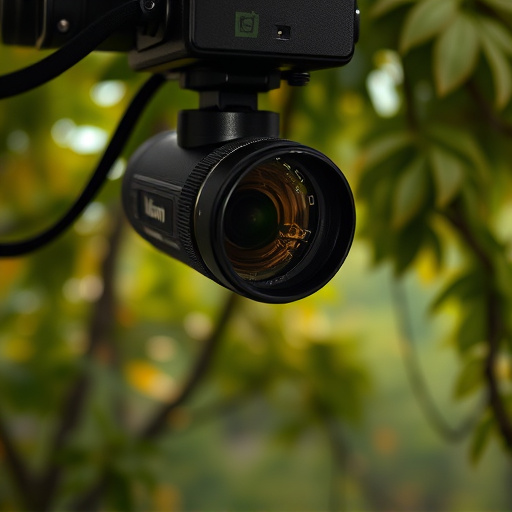In today's digital era, battery-powered spy cameras outdoor pose a significant threat to privacy. Professionals must be vigilant and employ advanced tools like signal detectors, EMF meters, and thermal imaging devices for effective counter-surveillance sweeps. The initial step involves identifying high-risk zones and using UV lights to detect subtle camera reflections. Strict data handling protocols and adherence to privacy laws are crucial to ensuring ethical operations while protecting individual privacy rights.
In today’s digital era, privacy concerns have surged alongside the proliferation of battery-powered spy cameras. These covert devices pose significant threats, targeting outdoor spaces with relentless surveillance. This comprehensive guide explores professional methods for countering such intrusions, focusing on identifying outdoor threats and common targets. We’ll delve into the tools and equipment essential for effective sweeps, provide a step-by-step conduct process, and emphasize best practices and legal considerations for safeguarding privacy.
- Understanding Counter Surveillance: The Rise of Battery-Powered Spy Cameras
- Identifying Outdoor Surveillance Threats and Common Targets
- Professional Tools and Equipment for Effective Counter Surveillance Sweeps
- Step-by-Step Guide: Conducting a Comprehensive Outdoor Sweep
- Best Practices and Legal Considerations for Privacy Protection
Understanding Counter Surveillance: The Rise of Battery-Powered Spy Cameras
In today’s digital era, the landscape of surveillance has evolved significantly with the proliferation of battery-powered spy cameras. These compact and often undetectable devices have become a game changer for both professionals engaged in counter-surveillance sweeps and individuals seeking to protect their privacy. The rise of battery-powered spy cameras outdoors has led to an increased need for thorough, methodical, and professional approaches during sweep operations.
Professionals must be adept at navigating the hustle and bustle of urban environments while keeping a keen eye for these subtle yet powerful tools of surveillance. By understanding the various types of battery-powered spy cameras—from gossamer-thin hidden cameras to sophisticated whisper-mode devices—specialists can devise effective strategies to detect, dismantle, and prevent their use. This involves delving into the technical aspects, employing enhanced detection techniques, and ensuring swift response to mitigate the impact of such surveillance methods on privacy and security.
Identifying Outdoor Surveillance Threats and Common Targets
In today’s digital era, professionals must be adept at identifying outdoor surveillance threats to stay ahead of potential risks. One of the prevalent and insidious tools used for illegal observation is the battery-powered spy camera outdoor. These tiny yet powerful devices can be concealed almost anywhere, from trees and bushes to mailboxes and outdoor lighting fixtures. They are designed to capture high-quality images and videos discreetly, making them a favorite among unsavory actors seeking to gather sensitive information.
Common targets for these battery-powered spy cameras include entrances and exits of homes, businesses, and public spaces; vehicles in parking lots or on private property; and areas with valuable assets or confidential activities, such as data centers or research facilities. Understanding these potential locations is the first step in conducting an effective counter-surveillance sweep.
Professional Tools and Equipment for Effective Counter Surveillance Sweeps
Professionals in the field of counter surveillance sweeps rely on specialized tools and equipment to ensure thorough and effective sweeps. One key component is Battery Powered Spy Camera Outdoor technology, which offers enhanced flexibility and covert operations capabilities. These advanced cameras are designed to operate discreetly for extended periods, allowing experts to monitor and identify potential hidden surveillance devices in various environments, from private residences to commercial buildings.
Additionally, a range of other tools like signal detectors, electromagnetic field (EMF) meters, and thermal imaging devices play crucial roles. Signal detectors help in locating hidden wireless cameras or tracking devices by picking up unusual radio frequency signals. EMF meters are used to measure electromagnetic fields, which can indicate the presence of hidden surveillance equipment. Thermal imaging devices provide valuable insights into temperature variations, aiding in the detection of heat-emitting devices like covert cameras or tracking bugs.
Step-by-Step Guide: Conducting a Comprehensive Outdoor Sweep
To conduct a comprehensive outdoor sweep for potential battery-powered spy cameras, begin by identifying areas of high surveillance risk. This includes perimeter boundaries, entry and exit points, as well as any structures or objects that could serve as hiding spots for hidden cameras. Next, equip yourself with specialized tools such as long-range UV lights, which can help detect reflective lenses commonly used in spy cameras.
Start the sweep by performing a visual inspection, looking for any visible signs of camera installation like drilling or wiring. Then, use the UV light to scan the area, searching for subtle reflections that might indicate the presence of hidden lenses. Pay particular attention to corners, shadows, and hard-to-reach areas where cameras are more likely to be placed. Once suspicious devices are located, carefully document their positions with photographs and coordinates for further analysis or professional intervention.
Best Practices and Legal Considerations for Privacy Protection
In the realm of counter surveillance, maintaining privacy and adhering to legal frameworks are paramount. When employing tools like battery-powered spy cameras outdoors, professionals must embrace best practices designed to protect personal information. This includes ensuring explicit consent during deployments, especially in public spaces, and following stringent data handling protocols to safeguard against unauthorized access.
Legal considerations demand meticulous attention to privacy laws and regulations. Understanding the legal boundaries surrounding surveillance technology, such as those governing battery-powered spy cameras, is crucial. Professionals should remain apprised of applicable laws, ensuring their operations do not infringe upon individual privacy rights. This involves implementing robust security measures to protect data stored from both internal and external threats, thereby fostering a culture of ethical and responsible counter-surveillance practices.
In light of the increasing prevalence of battery-powered spy cameras, understanding and mitigating outdoor surveillance threats have become paramount. By identifying common targets and utilizing professional tools effectively, individuals can significantly enhance their privacy protection. Following the step-by-step guide provided, conducting comprehensive counter surveillance sweeps becomes a practical and legal endeavor. Remember that staying informed about best practices is crucial to navigating this dynamic landscape, ensuring peace of mind in today’s digital age.
